3-2-1: A Solution For Small Apartments, Phase 2 Of Chapman's Place, A Book You Should Read, & More
Week #10
Happy 3-2-1 Thursday —
Lot of new faces this week, so welcome all.
3-2-1 is my weekly newsletter on incremental real estate development, smart growth, and creating great places. You’ll get:
3 things from others
2 things from me
1 picture
Enjoy!
3 THINGS FROM OTHERS
I.
I’ll be the first to admit—I’m a huge fan of small apartments.
After living in a couple shoeboxes in Manhattan, you quickly realize you don’t really need that much space to live. In theory, you “save” money versus living in a larger unit and, plus, it does kind of preclude you from becoming a hoarder.
And now that I’m (trying to) develop apartments, the tradeoff between unit size and monthly rent is even more stark. Not to harp on the trite adage around how construction costs are going through the roof but, like, that’s a very real constraint that needs to be considered.
Up here in Vermont (at least in my area), 800 square feet is considered small. But I’ll tell you what—unless you want to shell out $2,000 a month for a place to live (that you don’t own), good luck finding a new construction apartment of that size. Setting aside Affordable housing and renovations of existing buildings, of course.
In response to rising costs and stagnant wages, we’ve started to see more and more smaller units hit the market. For example, a 50+ new construction apartment complex just came online this summer with 400 square foot studio units that have been flying off the shelves. And my 9-unit development will have units in the range of 400-500 square feet as well.
Anyhow. All that to say that I recently learned of Ori—a manufacturer of space-saving, transformable furniture. What you see above is their Studio Suite that provides a somewhat elegant way to combine your bed, bookshelf, TV stand, and closet. They also have the Cloud Bed, Pocket Closet, and other intriguing combos that let you “live large in a small footprint.”
I’m not sure how well they work in reality, but I’d love to find out. They seem like an innovative way for developers to maximize density and reduce residents’ costs of living by way of smaller units with increased functionality (more bang for their buck). My hope is that Ori is able to start repositioning smaller unit sizes as more palatable to the greater population.
Unfortunately for me, however, they don’t (yet) sell directly to consumers. Instead, they’ve taken to partnering with large-scale developers as a way to presumably test out their product before rolling out on a larger scale.
Regardless, they’re worth a look. Especially since that’s all we can really do at this point.
II.
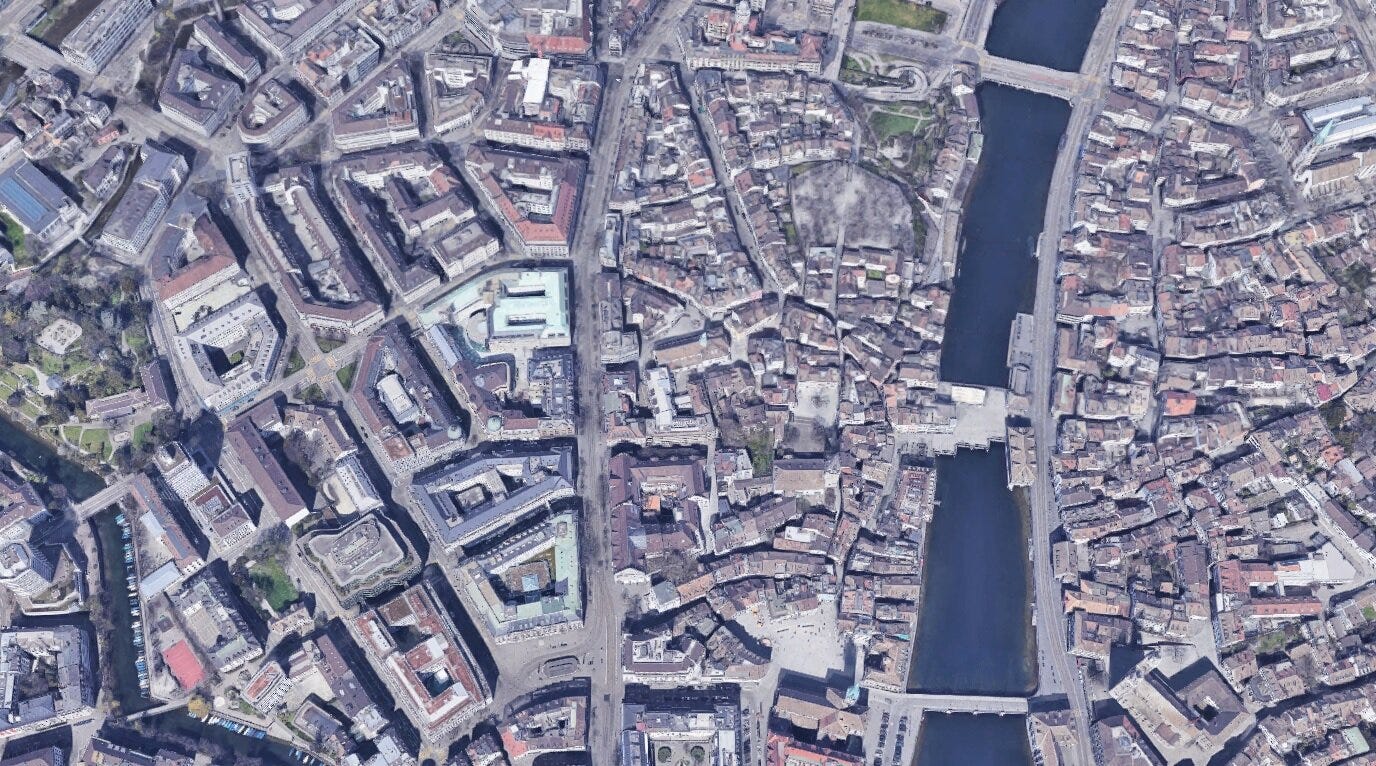
Software engineers don’t design user interface, so why do we let civil engineers design streets?
The driver of effective street design is a hot topic (pun not intended but there it is). And it sure as hell isn’t the prioritization of cars—much to the chagrin of transportation engineers.
Great streets, just like great software products, are not created in a vacuum. They require input from many stakeholders, not just the technical folks.
The article is less of a solution and more of a plea to correct course. But a good cross-industry comparison nonetheless.
III.
👇 Same with the original Brooklyn brownstone. It seems to be less about repetition than it is architectural design and material selection.

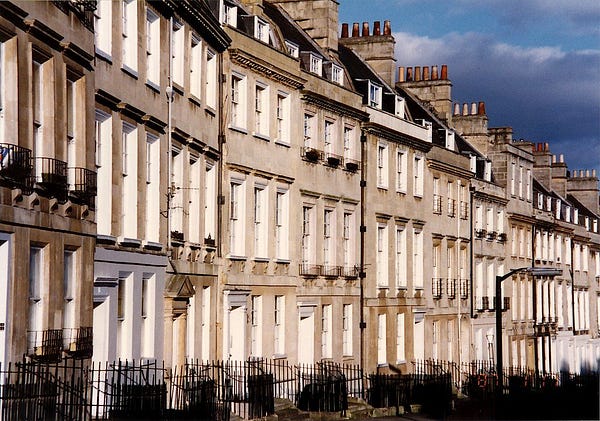
2 THINGS FROM ME
I.
Earlier this year, four partners and I purchased a vacant, half-acre lot on Main Street in our town center.
Our long term plans continue to evolve, but we decided to focus this summer on activating the barren site with art, games, and events as we figured it out (more here and here). After an unsuccessful application for a key grant we applied for, we pushed forward regardless and invested $25,000 of our own private capital. And with help from the community—and some of our own blood, sweat, and tears—we were able to host several 300-person events, commission two local artists, plant a ton of flowers, install a perimeter fence, acquire a gazebo, install a Bedouin tent (yes, you read that right), and create a space for the community to use freely. We call it Chapman’s Place.
My partners also opened up a coffee hut with the help of the manager of their general store (and a few amazing staff members). Arguably the best (and only) latte in town.
What we lovingly now refer to as Phase 1 was a great start. But it’s only the beginning.
Phase 2 planning started about a month ago, mainly focused on bringing in a number of strategically-placed trees along with some additional landscaping. With the help of a local landscape architect, we crafted the plan above.
I’ll be quick to say it—I can’t take any credit for pulling Phase 2 together. 100% of the credit goes to several of my talented partners for taking the reigns here.
And, furthermore, we were fortunate to raise $10,000 from our newfound Friends of Chapman’s Place—a mix of community members, family, friends, and ourselves—to execute on our Phase 2 plan.
We kicked off work last week. Then, this past Saturday, we held a Last Tree ceremony to celebrate—you guessed it—the planting of the final tree.
Phase 2 is still a work in progress but I will say it’s shaping up to be another transformative step in our community-wide saga to breathe some life into this vacant lot.
And, in case you missed it, the Burlington-based TV crew from Channel 3 showed up. That’s OK though, you can still rewatch the full segment here.
II.
I finished reading Chuck Marohn’s Confessions of a Recovering Engineer this week (not an affiliate link in case you were wondering). It provides an eye-opening analysis of what’s wrong with our current transportation system, uncovers the damaging impact it has on local economic prosperity, and lays out an insightful approach to get us back on track.
If you live anywhere with streets and roads, you should read the book. Yes, that means all of you. It will change the way you think about the why and how of successful places.
Here are my top five quotes:
“Roads connect productive places, while streets are the platform for building wealth within a place.”
Making the distinction between a street and a road is a critical first step in transportation reform. In essence, roads are for cars (travel between places) and streets are for humans (where activity and commerce within a city or town center occurs). Too often, engineers merge the two into what Marohn calls a stroad, which is neither efficient nor wealth-building.
“Traffic engineers are a critical part of designing transportation systems, but the values of the public need to dominate decision-making.”
Engineers prioritize design speed, traffic volume, safety, and cost in that order. Most humans actually prioritize those values in reverse when consulted.
“A prerequisite for building wealth is that a street is safe.”
Economic prosperity within a place cannot materialize when vehicles are flying down the streets. Downtown streets need to be redesigned to slow down (or reduce) traffic naturally, allowing for slower forms of transportation (walking, biking, scootering, etc) to take over.
“Street design is not meant to be an efficient process.”
Road design, sure—that’s all about speed and volume. But creating a street is more like painting a picture than printing a copy of another poster (Marohn’s analogy, not mine). Each one will have subtle nuances and unique requirements to satisfy the needs of the community. It will take time and effort to successfully design a great street.
“Public transit is a wealth multiplier.”
But only if implemented correctly. Transit should be used to achieve denser communities where less parking is required because it is no longer needed for comfort or independence. Acres of parking lots surrounding transit hubs undermine the efficacy of these massive capital investments.
1 PICTURE
I.
A poignant reminder of the church that was demolished to make way for a Sunoco gas station across the street (hint: the wall is a mural, not a reflection).
📍 Philedelphia, Pennsylvania
That’s it for today. Thanks for reading. If you haven’t yet, go ahead and subscribe here:
About me: I’m Jonah Richard, a small-scale real estate developer in Vermont. With my company, Village Ventures, I’m currently getting my hands dirty redeveloping mixed-use buildings along Main Street while trying to pick apart and replicate what makes other communities thrive.
Follow me on Twitter for more things related to incremental real estate development, smart growth, and creating great places.

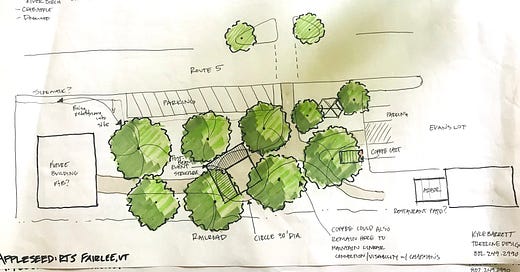


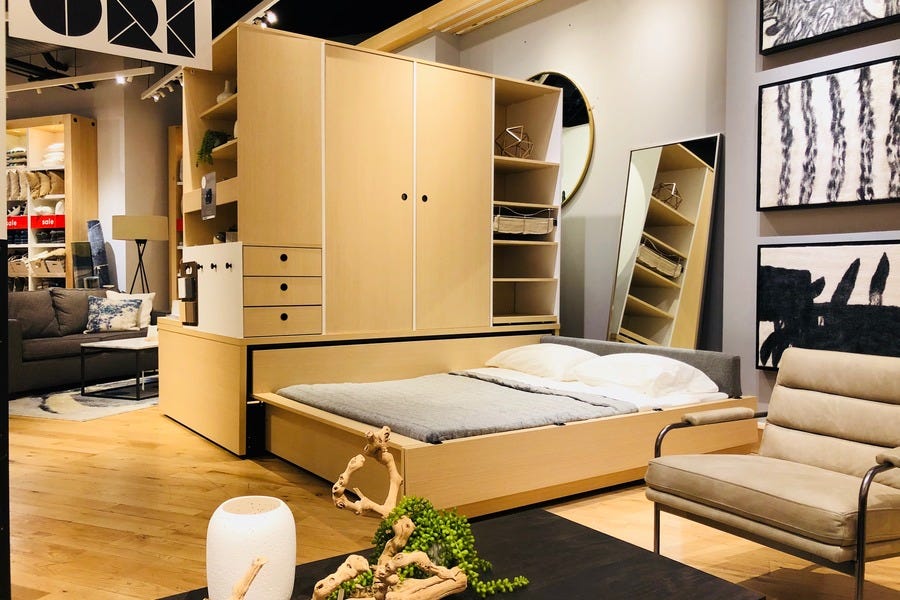


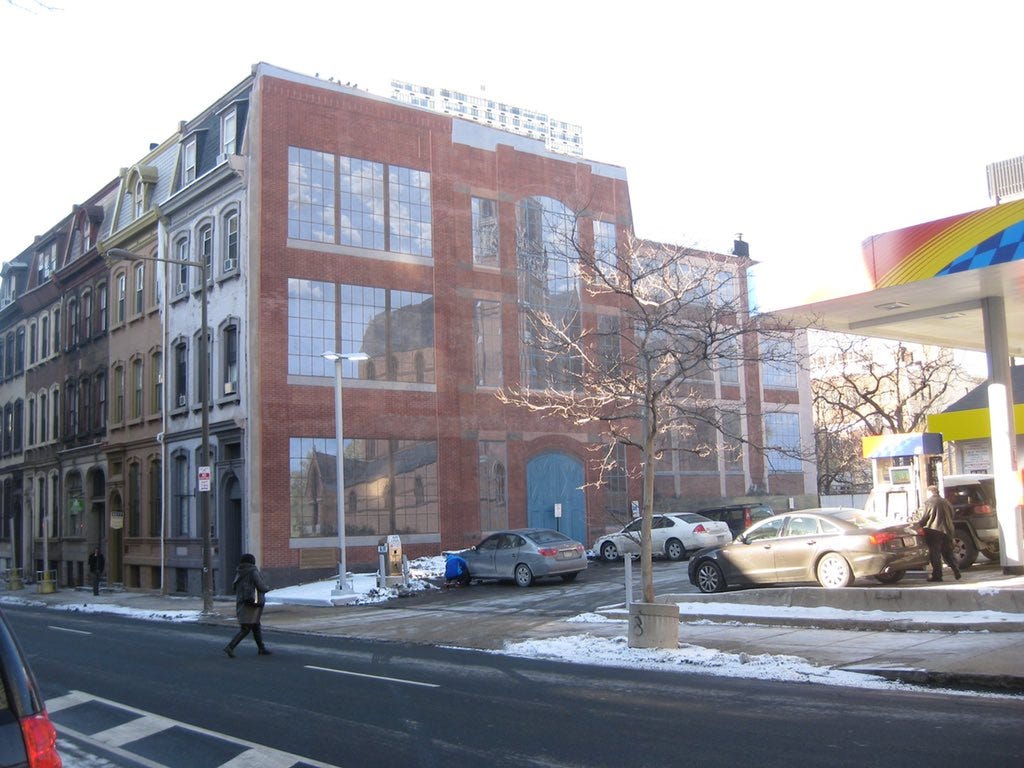
Love your post Jonah! Couldn't agree more on the value of efficient space. We dropped an interview today with Caira Button, Small Space Living Influencer and recently spoke with Hasier Larrea, CEO of ORI .. check it out.